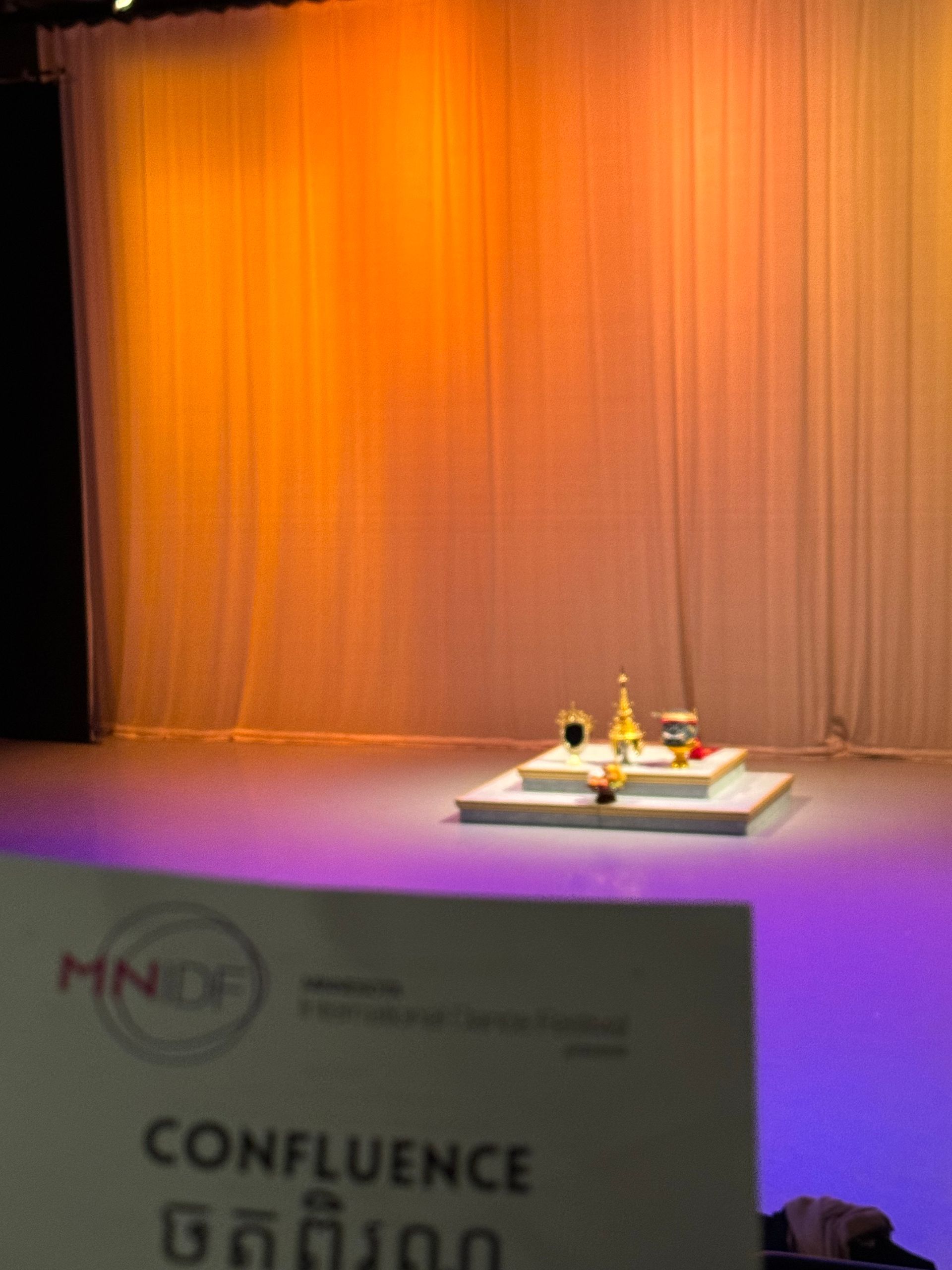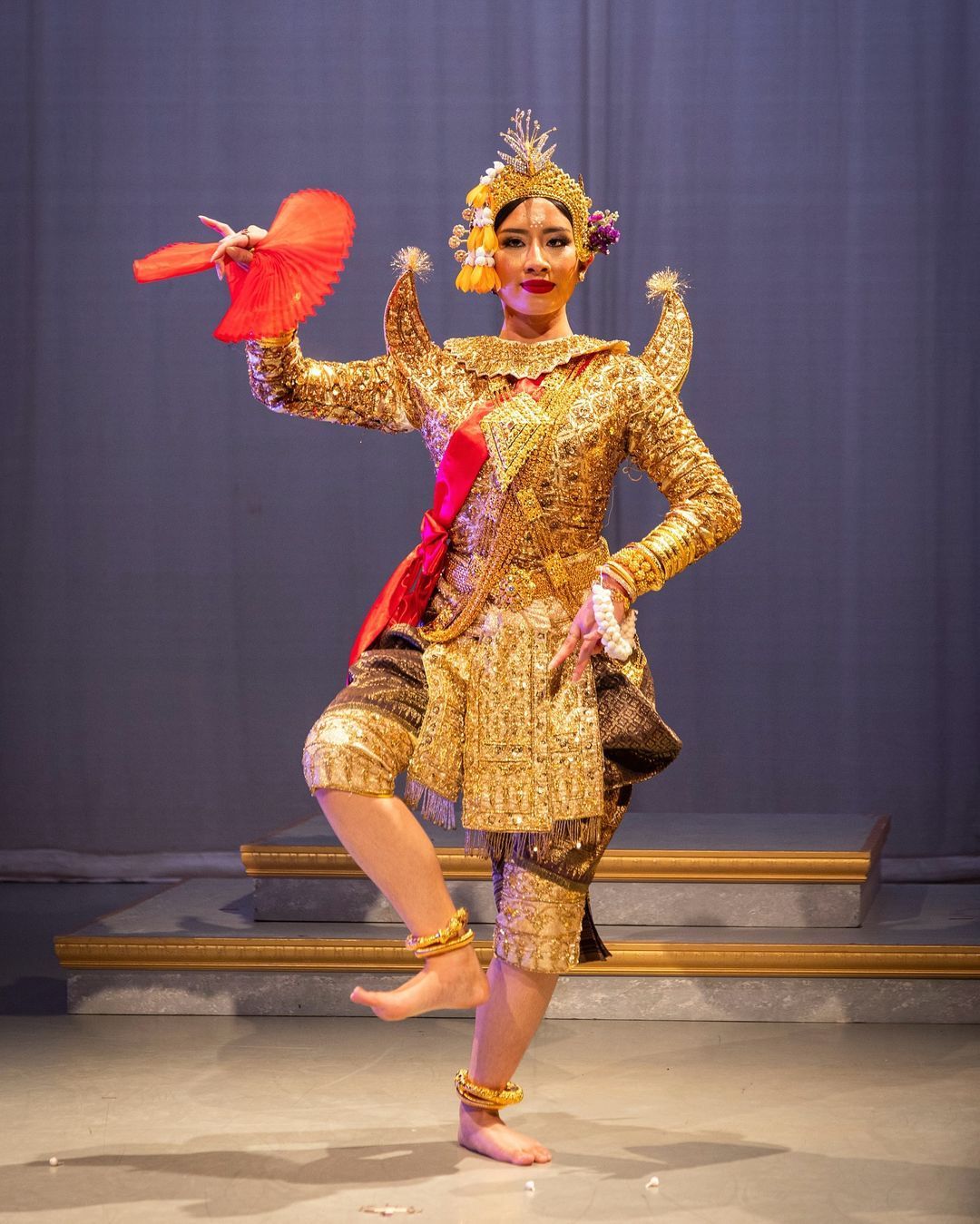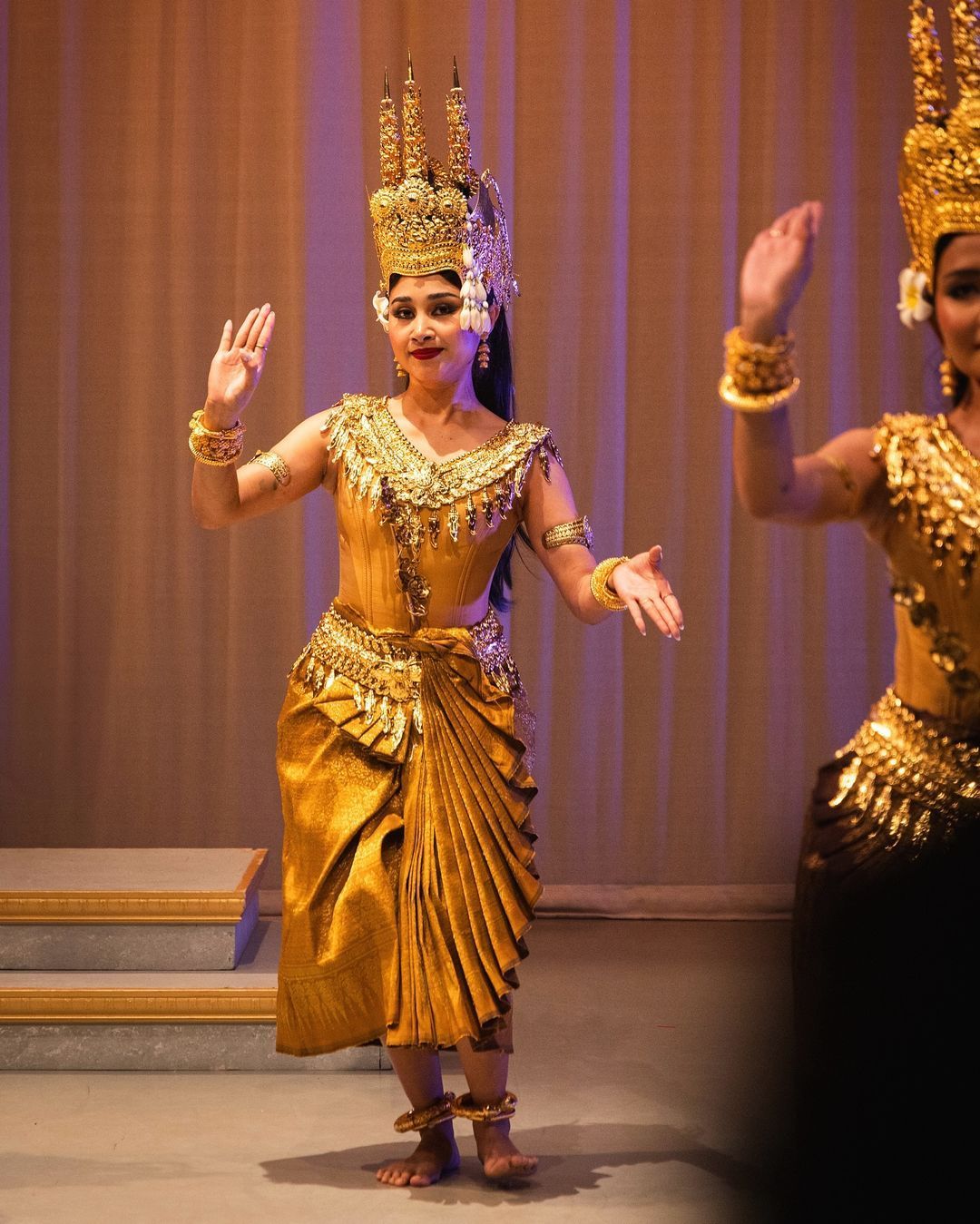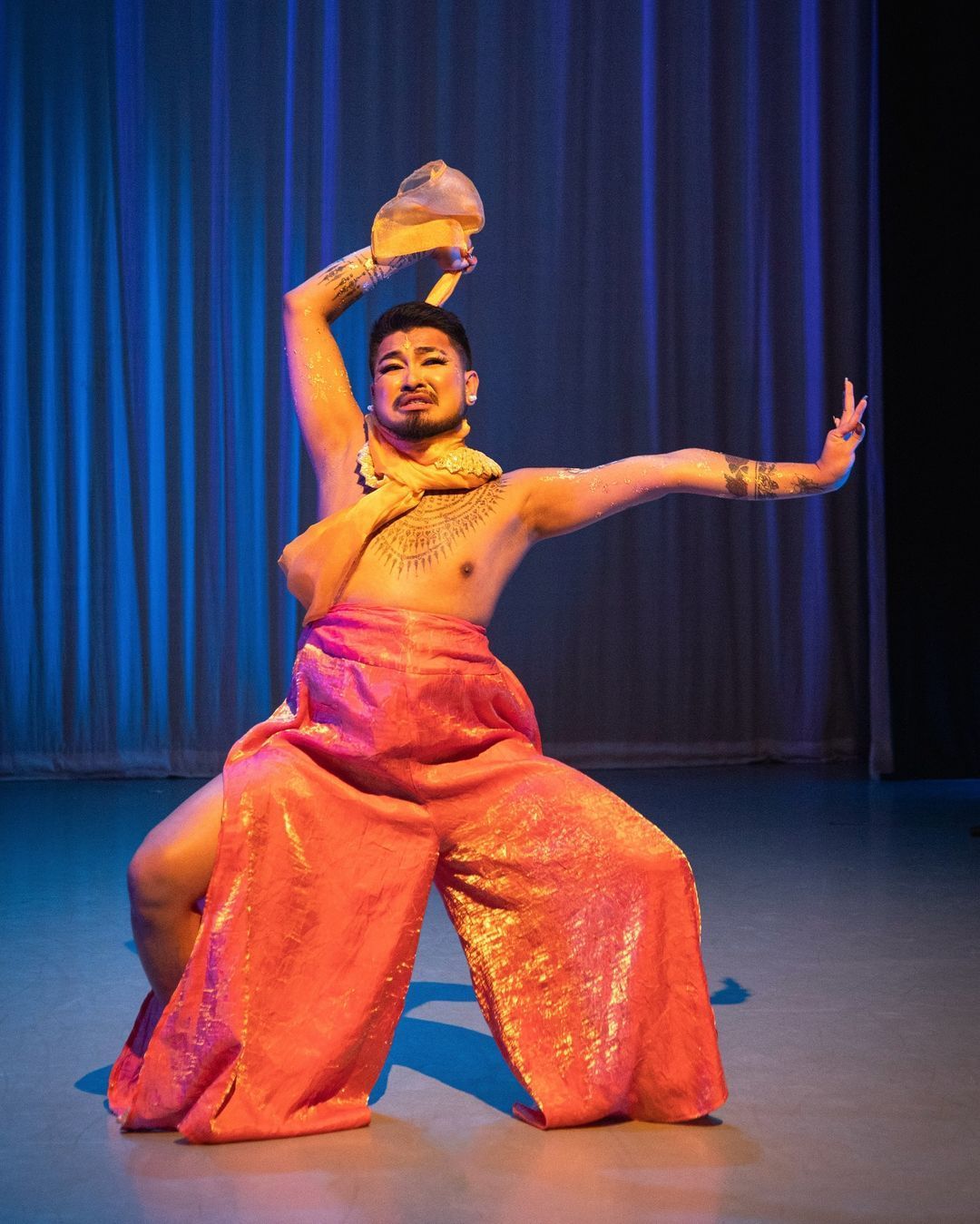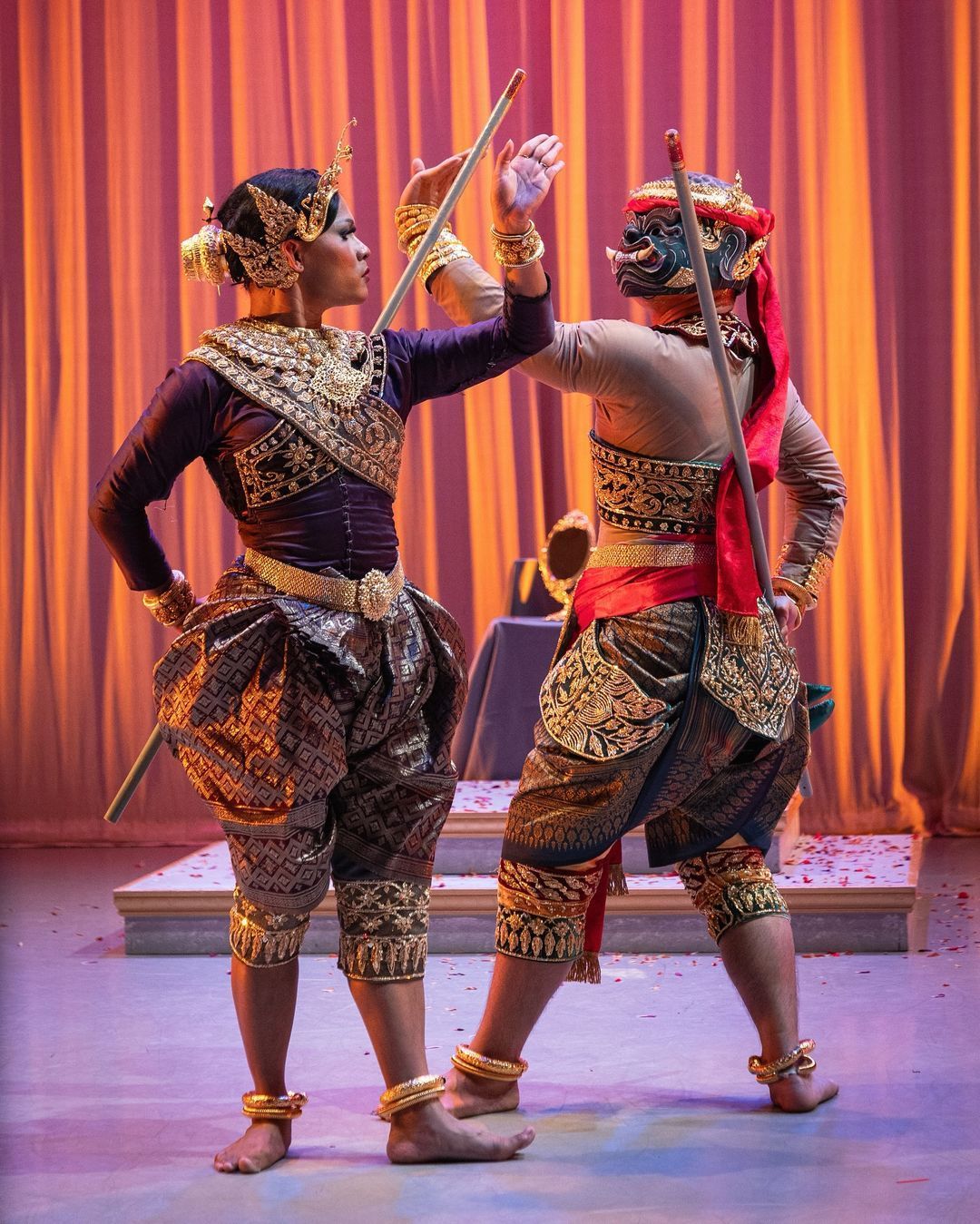The first two performances were from a non-Cambodian dance company. It was cool to see a production that blends the traditional with the temporary. I could tell that these dancers really took some time to learn some of the posturing and movement of traditional dance. I see this willingness as the dancers showing their open hearts in dance. As I have begun my own training in traditional dance, I have learned that the movement requires an open heart. Same with the practice of yoga. The more open your heart is, your mind will follow and so will your body. Never would I have thought I was capable of doing dance today after being in a terrible accident. My heart was telling me to dance and to be open about the experience!
Description: Satuka is a custom in Cambodian dance that plays before an important show to cleanse the stage and invoke past dancers and masters to bear witness to the performance and to guide the dancers on the stage. This piece was set by the Khmae Urban Ballet on the dancers of Crash Dance Productions during the festival, symbolizing confluence - the coming together - of cultures and communities, setting the stage for this performance.
